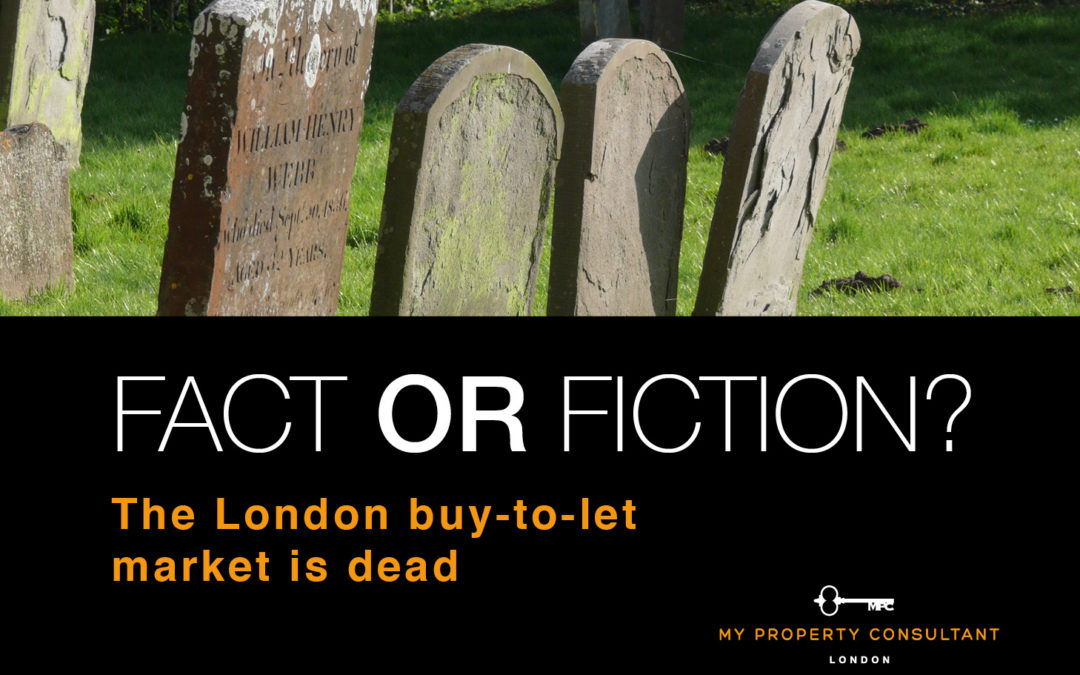FICTION, and here’s why…
It has been a tough old time for buy-to-let landlords thanks to the increase in stamp duty, changes in tax relief and the introduction of new lending rules. In addition, some commentators believe the property market has peaked, and a general sense of nervousness around the state of the economy isn’t helping. So does all of this add up to the death of the buy-to-let market, or are rumours of its demise greatly exaggerated?
Well, as Warren Buffet once said “Be fearful when others are greedy, and greedy when others are fearful”. Do I think the buy-to-let market is dead? Far from it. And here’s why:
Invest for the long term and ride the storm
The truth is that it’s almost impossible to call the top of the property market, so it’s best not to try. If, for example, you had invested in a flat in south west London at the very peak of the market in 2007/08, just before the credit crunch took hold, you would have paid an average of £348,000*. That flat is now worth an average £483,000* eight years later. That’s a 28% increase, which is not bad considering it takes into account one of the worst economic crises we’ve ever seen.
And you have to be pretty unlucky to buy at the absolute peak. If you had invested six months earlier, your return would have been 40%. My point is that, even if you do buy at the peak, over the longer term, excellent returns are still achievable.
*Source: Rightmove, June 2016
There will always be a need for rental properties
A recent report by the Royal Institution of Chartered Surveyors (RICS) showed that demand for rental properties is likely to increase at 4.6 per cent per year over the next five years, which will likely have an upward impact on rents. The latest My Property Consultant Property Index Tracker also showed that rents across England are rising at the fastest rate for six months, with landlords seeing total annual returns (before costs) of 10.7% in the year to April, with gross yields steady at 4.9%. Demand continues to outstrip supply, especially in London, and it’s highly unlikely this will change in the foreseeable future.
Market forces usually prevail
A big factor in house price growth is a simple supply and demand issue. What has still not been addressed is the shortage of housing, particularly in London. According to The Office for National Statistics, London’s population is set to rise by 13 per cent over the next decade, hitting nearly 9.4 million by 2022. A recent article published by Bloomberg claimed that London needs one million new homes in the next decade to meet demand. To put that into perspective, developers built just 21,350 new homes in Greater London in the year to September 2015, according to UK Government data.
Mortgage rates are at an all-time low, so now is a good time to lock-in
Buy-to-let mortgages have fallen to record levels thanks to the historically low Bank of England base rate. Latest interest rate predictions suggest they won’t increase until December 2019 due to a weak global economy. According to Moneyfacts, there are now more than 1,000 buy-to-let mortgage products on the market, up from just over 800 a year ago and 486 in 2012, so borrowing conditions are favourable for landlords. Combine this with rising rents, and returns look good. It’s true that these conditions are unlikely to last forever, so we always stress-test a rise in interest rates with our clients and what that would mean for them.
Conclusion
In my opinion, the buy-to-let market is very much alive and kicking. Market forces in London are still stacked in favour of landlords, and this looks set to continue as long as there is a supply and demand issue. But as with any investment, there are good places to invest, and not so good. The key is to find a property in an up-and-coming area, close to transport links, and with high rental demand, and always to approach it as a longer-term investment.

